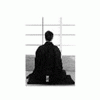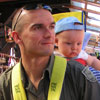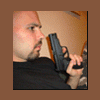
Aikido w brazylii.
Napisano Ponad rok temu
Napisano Ponad rok temu
Sorry, nie mogłem sie powstrzymac
Napisano Ponad rok temu
Myślę, że jest duzo klubów, jedyną różnicą w porównaniu z Polską jest to, że tam bjj prowadzacy ćwiczą od początku, a w Polsce zaczynali od aikido.
S.
Napisano Ponad rok temu
Napisano Ponad rok temu
Napisano Ponad rok temu
Napisano Ponad rok temu
Napisano Ponad rok temu
Być może wrócę do tematu , który już zszedł z tapety, ale powiedział, że aikido świetnie pozwala poznać mechanike dzwigni, rozwija timeing, relaks i jest interesujące od strony filozoficznej.dodał że nie jest łatwe, ale za to inspirujace. Zademonstrował zresztą całkiem poprawne KoteG na dowód, że nieco liznął tego tematu.
Napisano Ponad rok temu
z tego co wiem Chiba Sensei tam nie jezdzi.
BRAZIL, HISTORY OF AIKIDO IN
The origins of aikido in Brazil can be traced to the arrival in São Paulo in late 1958 of Toshio KAWAI. Kawai is said to have studied AIKIJUJUTSU with Torataro Saito and, during a trip of several months to Europe, learned from Aritoshi MURASHIGE. In 1963, Kawai obtained authorization from the AIKIKAI HOMBU to spread aikido in Brazil and opened a dojo in São Paulo the same year. At the end of that year, Teruo Nakatani, a Japanese businessman, was transferred to Rio de Janeiro. Nakatani was quite successful in spreading the art in Rio and cultivated several young Brazilians who would later become instructors. One of his students, Jos‚ Maria R. S. Martins established a club in Brasilia in 1972.
The introduction of aikido to Curitiba, in the state of Paranâ, was due to a relative of Kawai named Noritaka. After the return of the latter to Japan in 1969, his leading student, Jorge Dirceu Van Zuit, a police officer, established a dojo in this city. One of his students, Wagner BULL, later took over Van Zuit's school when his teacher was transfered.
The growth of aikido in the São Paulo area was slow with only a few dojos in operation by the early 1970s. During these years, Kawai was assisted by Keizen Ono, one of his first students. In 1975, Kawai was named official representative of the Aikikai for Brazil. In the same year, another Japanese businessman named Torata arrived in São Paulo and began a dojo in coordination with Kawai.
At the initiative of Nakatani, a young student of Yasuo KOBAYASHI named Ishitami SHIKANAI arrived in Rio de Janeiro in July of 1975. Although his activities were centered in the Rio area, Shikanai also established an aikido club in the OMOTO temple in São Paulo. Masanao Ueno, a 5th dan, was another Japanese to arrive in São Paulo in 1977. Ueno initially worked with Kawai, but later broke with him and formed an organization called the Instituto Shimbukan. He oversees several dojos in the São Paulo area and is also active in the promotion of Shintoism. Masaki Tani was another Japanese who came to Japan on business in 1977 and taught aikido at the Kikuchi dojo, which had links with the macrobiotics movement. Tani remained for four years in São Paulo.
In the late 1970s, Kawai created the FEDERAÇÃO PAULISTA DE AIKIDO (FEPAI=Aikido Federation of São Paulo). In order to comply with government regulations concerning sports, he ostensibly devised a form of competition (though no competitions were actually held) and succeeded in registering the name Aikido as a trademark with the Brazilian Boxing Federation, thus becoming part of the National Sports system. The FEPAI thus became, officially speaking, the only group entitled to use the term Aikido. At about the same time, Kawai was appointed as the official Aikikai representative for all of Latin America.
Having earlier moved to the island of Niteroi in 1978, Shikanai relocated to Belo Horizonte in Minas Gerais in 1985 leaving his three dojos in Rio in the hands of Bento Guimares, Pedro Paulo and Adelio Andrade while continuing to provide technical direction. Shikanai's group obtains its rankings from the Aikikai via Yasuo Kobayashi.
Wagner Bull, a former student of Van Zuit and Kawai among others, established an independent organization called the Instituto Takemussu in 1985 which obtained government recognition in 1988 as a noncompetitive form of aikido. This decision ended the monopoly held by Kawai over the administration of aikido in Brazil. Bull subsequently enlisted the support of Yoshimitsu YAMADA of the New York Aikikai for ranking purposes. At present, there are four groups connected to the Aikikai in Tokyo: the FEPAI which counts about 350 practitioners in six dojos; the organization of Shikanai; the macrobiotics group headed by Kikuchi; and the Instituto Takemussu of Wagner Bull which operates three dojos with some 150 practitioners. Other styles of aikido with a presence in Brazil are SHINSHIN TOITSU AIKIDO and TOMIKI AIKIDO.
Użytkownicy przeglądający ten temat: 1
0 użytkowników, 1 gości, 0 anonimowych
 FaceBook
FaceBook
10 następnych tematów
-
 Jacek Wysocki i atemi.
Jacek Wysocki i atemi.- Ponad rok temu
-
 Ki aikido a aikido O-sensei
Ki aikido a aikido O-sensei- Ponad rok temu
-
 Aikido- magnes dla oszołomów?
Aikido- magnes dla oszołomów?- Ponad rok temu
-
 Czego inne style moga sie nauczyc od aikido?
Czego inne style moga sie nauczyc od aikido?- Ponad rok temu
-
 Metodologia nauczania tradycyjnych japońskich SW
Metodologia nauczania tradycyjnych japońskich SW- Ponad rok temu
-
 uraz kręgosłupa
uraz kręgosłupa- Ponad rok temu
-
 Aikido Association International
Aikido Association International- Ponad rok temu
-
 seiza
seiza- Ponad rok temu
-
 Ch. Tissier
Ch. Tissier- Ponad rok temu
-
 Zmiana partnera
Zmiana partnera- Ponad rok temu









